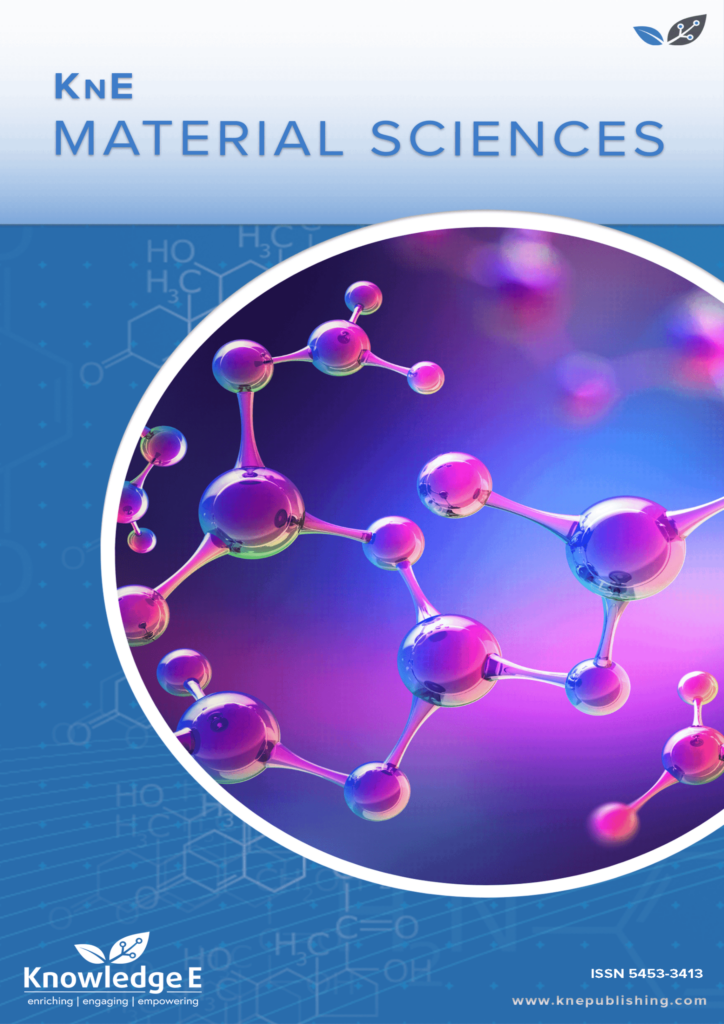
KnE Materials Science
ISSN: 2519-1438
The latest conference proceedings on physical materials, energy materials, electrical materials.
Chemical Composition of the Essential Oils in Portuguese Daucus Carota Subspecies
Published date: Aug 10 2022
Journal Title: KnE Materials Science
Issue title: 1st International FibEnTech Congress (FibEnTech21) – New Opportunities for Fibrous Materials in the Ecological Transition
Pages: 72–79
Authors:
Abstract:
This study focused on five different subspecies of Portuguese Daucus carota L., to identify the main compounds in the essential oils of umbels from each subspecies. The isolation of the essential oils was performed by hydrodistillation methods followed by further composition analysis by gas chromatography-mass spectrometry, ultimately demonstrating that each subspecies had different major compounds. This study concluded that the main compounds found in Daucus carota subsp. maritimus were geranyl acetate, followed by trans-methyl-isoeugenol, α-pinene, cis-asarone and elemicin. Daucus carota subsp. hispidus presented with the major compounds as geranyl acetate, caryophyllene oxide, trans-methyl-isoeugenol and sabinene. For Daucus carota subsp. maximus, the major compounds were cis-asarone, geranyl acetate and elemicin, which was similar to Daucus carota subsp. carota which presented with the major compounds as geranyl acetate, cis-asarone, trans-methylisoeugenol and α-pinene. Finally, the major components of Daucus carota subsp. sativus were carotol and daucol.
Keywords: essential oils, chemical composition, Daucus carota, hydrodistillation, GC-MS
References:
[1] Majdoub S, El Mokni R, Muradalievich AA, Piras A, Porcedda S, Hammami S. Effect of pressure variation on the efficiency of supercritical fluid extraction of wild carrot (Daucus carota subsp. maritimus) extracts. Journal of Chromatography B: Analytical Technologies in the Biomedical and Life Sciences. 2019;1125:121713;1-6. https://doi.org/10.1016/j.jchromb.2019.121713
[2] Khalil N, Ashour M, Fikry S, Singab AN, Salama O. Chemical composition and antimicrobial activity of the essential oils of selected apiaceous fruits. Future Journal of Pharmaceutical Sciences. 2018;4(1):88–92. https://doi.org/10.1016/j.fjps.2017.10.004
[3] Ng TB, Fang EF, Li X, Lu Q, Wong JH, Guo H. Essential oils in food preservation, flavor and safety. In Essential Oils in Food Preservation, Flavor and Safety. Elsevier Inc; 2015;34;303-308 https://doi.org/10.1016/B978-0-12-416641-7.00034-1
[4] Spooner, DM. Daucus : Taxonomy, Phylogeny, Distribution. in The Carrot Genome 2019 ; 9–26. https://doi:10.1007/978-3-030-03389-7_2.
[5] Tavares AC, Loureiro J, Castro S et al. Assessment of Daucus carota L. (apiaceae) subspecies by chemotaxonomic and DNA content analyses. Biochemical Systematics and Ecology. 2014;55 :222–230. https://doi.org/10.1016/j.bse.2014.03.031
[6] Snene A, Mokni R, El Mahdhi A, Joshi RK, Hammami S. Comparative study of essential oils composition and in vitro antibacterial effects of two subspecies of Daucus carota growing in Tunisia. South African Journal of Botany. 2020;130:366– 370. https://doi.org/10.1016/j.sajb.2020.01.028
[7] Gaglio R, Barbera M, Aleo A, Lommatzsch I, La Mantia T, Settanni L. Inhibitory activity and chemical characterization of Daucus carota subsp. maximus essential oils. Chemistry and Biodiversity. 2017;14(5);1-6. https://doi.org/10.1002/cbdv.201600477
[8] Sieniawska E, Świątek Ł, Rajtar B, Kozioł E, Polz-Dacewicz M, Skalicka-Woźniak K. Carrot seed essential oil—Source of carotol and cytotoxicity study. Industrial Crops and Products. 2016;92:109–115. https://doi.org/10.1016/j.indcrop.2016.08.001
[9] Verma RS, Padalia RC, Chauhan A. Chemical composition variability of essential oil during ontogenesis of Daucus carota L. subsp. sativus (Hoffm.) Arcang. Industrial Crops and Products. 2014;52:809–814. https://doi.org/10.1016/j.indcrop.2013.12.012
[10] Azmir J, Zaidul ISM, Rahman MM et al. Techniques for extraction of bioactive compounds from plant materials: A review. Journal of Food Engineering. 2013;117(4):426–436. https://doi.org/10.1016/j.jfoodeng.2013.01.014
[11] Khayyat SA, Sameeh MY. Bioactive epoxides and hydroperoxides derived from naturally monoterpene geranyl acetate. Saudi Pharmaceutical Journal. 2018;26(1):14– 19. https://doi.org/10.1016/j.jsps.2017.11.005
[12] Sharma M, Chahal KK, Kaur R, Singh R, Kataria D. Antifungal potential and structure activity relationship of carrot seed constituents. Journal of Food Biochemistry. 2019;43(9):1–9. https://doi.org/10.1111/jfbc.12971